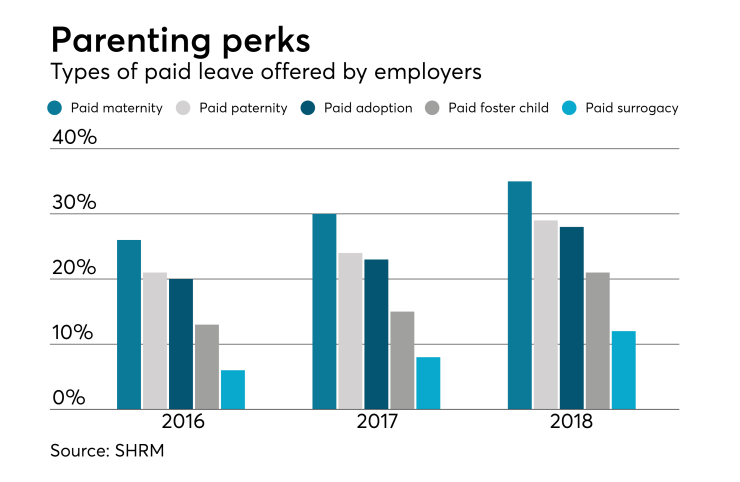Al-nisa and Gabriel were happy to welcome a new baby daughter to their family. But recovering from a C-section and caring for their autistic 5-year-old son was a challenge for two working parents — and neither her job as a school paraprofessional nor his as a hospital security guard provided paid family leave to help with the transition, according to FamilyValuesatWork.org.
Lucky for them, they live in New Jersey, one of the few states mandating both statewide medical and family leave insurance. That meant 14 weeks of paid leave for mom and six weeks for dad. A happy ending, right?
Yes, but … it shouldn’t depend on luck or geography to determine if workers are entitled to an essential benefit that protects their families and helps them return to the job healthy and more productive. Paid family leave — almost universal in the rest of the world — isn’t guaranteed in this country. In fact, the U.S. is the only developed country without government-mandated paid parental leave.

The Family Medical Leave Act was enacted in 1993, providing job protection while workers take leave for family care issues. However, that leave is unpaid — and more than a quarter of a century later, that hasn’t changed. True, the law has been amended to expand coverage to workers with a family member in the military and to same-sex spouses. But still, from a federal standpoint, if you take family leave, it’s on your dime.
The lack of federal legislation around paid family leave has been disappointing, but this inertia has had one positive side effect: growing state leadership in championing the cause. California was first to respond, enacting statewide paid family leave legislation in 2002. New Jersey’s law was passed in 2008, followed by Rhode Island in 2013 and New York in 2016. Washington, Washington, D.C. and Massachusetts also have approved laws yet to be implemented, and a bill is now on the table in Maine, too. These state programs typically provide 55% to 67% of wages for 10 to 12 weeks. Leave generally includes six weeks of temporary disability insurance and four to six weeks of additional paid family leave.
See also:
“Changing the benefit from unpaid to paid will make it more realistic for families to use the benefit,” says Sara Gideon, Democratic House Speaker who proposed Maine’s bill. Many workers cannot afford to take unpaid leave because of the loss of income or have to cut their leave short due to financial pressures, according to the U.S. Department of Labor.
Some municipalities also have emerged as leaders in passing their own paid family leave legislation. That’s particularly evident in cities with a strong tech community where highly skilled workers are in demand.
For example, San Francisco enacted a citywide paid parental leave program in 2016, funded by employee and employer contributions, to cover wages not replaced under the state program. The same year, King County, Washington (site of my own tech-forward hometown, Seattle), passed similar legislation that provides county employees with up to 12 weeks of paid leave.
Paid leave works
California’s program had been used nearly 2.8 million times to care for a new child or seriously ill family member, according to a September 2018 report from the National Partnership for Women & Families. And the vast majority of the state’s employers report the law has had a positive or no effect on either their profits or on employee productivity and performance. This verdict comes especially from very small businesses with fewer than 50 employees.
Three in five California employers report coordinating their paid leave policies with the state’s insurance program, which likely actually saved them money. Meanwhile in
States and cities are making some progress, but will federal legislation catch up with this growing, more grassroots trend to guarantee paid family leave for America’s workers? There are positive signs: Ivanka Trump was pushing bipartisan agreement on paid family leave on Capitol Hill in February, while a group of Democratic senators have reintroduced the Family and Medical Insurance Leave Act.
In my next column, we’ll look into how these and other recent signs of progress are developing.
This is the second in a six-part series on paid parental leave for America’s workers: how it started and where it’s going, who’s doing it well, why it’s such a challenge for employers and employees, and why it’s essential to the long-term economic growth of our country.





